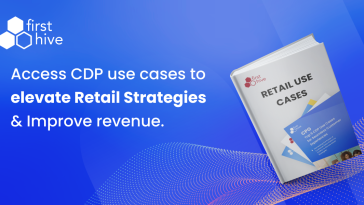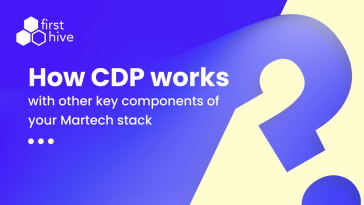80% of marketers stated in a report that they want to use integrated marketing and advertising technology from a single vendor. But, the same report also reveals that the marketing technology landscape constitutes of over 8,000 vendors in different categories, and the average enterprise uses an average of 91 solutions. This dichotomy between what marketers want and what is needed to carry out effective marketing campaigns has called for a ‘state of integration’ to the marketing realm.
The growing marketing tech landscape is justified by the consumer response and the vast amount of content generated per minute in 2020. This increases the complexity for businesses to ingest the data and sift for content and brand mentions relevant to their purpose. In an attempt to stay intelligent and vigilant towards competition, brands have to also cater to that noise and sieve it by relevance.
| Content Generated | Amount per minute |
| E-mails sent | 188,000,000 |
| Mobile messages sent | 41,600,000 |
| Text messages sent | 18,100,000 |
| GIFs served by GIPHY | 4,800,000 |
| Videos watched by YouTube users | 4,500,000 |
| Search queries via Google | 3,800,000 |
| Snaps created by Snapchat users | 2,100,000 |
| Swipes on Tinder | 1,400,000 |
| Facebooks logins | 1,000,000 |
| Views on Twitch | 1,000,000 |
| Dollars spent online | 996,956 |
| Hours of Netflix watched | 694,444 |
| Apps downloaded | 390,030 |
The siloed nature of the disconnected Martech landscape is what creates an immediate need for marketers to depend on a Customer Data Platform (CDP). CDPs have emerged as a viable answer to the ‘state of integration’ that marketers are seeking from this year onwards.
Apart from offering integration of disparate marketing sources of information, a single view of a customer across all engagement channels, and enabling omnichannel customer journey orchestration, CDPs are designed to create a rooted impact on the ROI of all marketing initiatives.
Impact of a CDP on different Enterprises
Though marketers choose to use a Customer Data Platform for better marketing intelligence, CDPs have facilitated success for other functions of the business as well. Here are some hand-picked experiences of how FirstHive has impacted Enterprises in different industries over the last few years.
Customer Acquisition
The mortgage business has never been easy. Optimized customer acquisition in this sector equates to the tight integration of internal banking systems which also ensures compliance and buy-in from various bank stakeholders. The success of system integration, in this case, is determined by the recruitment and engagement of individual channels that play the role of a connector.
In one of the problems that we handled for a leading bank, FirstHive enabled the mortgagers to engage with their ‘connectors’ as a key lead acquisition channel and create a single funnel for the mortgagers across various interfaces and tools. This also required data to be fed into the CRM for assigning sales and integrating with core banking enabled real-time visibility on disbursement status.
This led to additional loan disbursements of $1.2 Bn, increased lead registrations going beyond 20,000, and eventually optimized customer acquisition channels.
Recurring Revenue Streams
Value-Added Services (VAS) is a lucrative opportunity for recurring revenues. The success of VAS is determined by an existing pool of loyal customers. A large insurance third-party administrator partnered with FirstHive to hyper-target, cross-sell and up-sell campaigns to employees of an existing pool of enterprise customers. The platform facilitated seamless multi-channel integration which included a website, mobile app, and social channels.
While the acquisition of customer data such as preferences, reporting, and cohort segmentation were a few immediate results of the efforts. The CDP contributed to increased conversion rates that grew by 40 %. FirstHive is now implemented in other parts of its business.
A global investment fund that gained increased visibility about customer data with FirstHive has also experienced a quick turnaround of those results. The brand had better visibility to Independent Fund Advisers (IFAs) enabling them to convert the same effectively. In addition to this, they are also able to drive training programs, in conjunction with their academy set up and assess the efficacy of the same across partners, and correlate the same to the sales performance.
Tight Cost Controls
A baby care brand used FirstHive to integrate channels and achieve a Single Customer View. With multiple channels, identifying marketing costs and attributing them to different customers or channels was a complex activity. Their channel integrations included CRM, campaigns, e-commerce, offline, and programmatic.
FirstHive unified 160 Mn interactions and attributed the same to just over 200,000 unique shoppers. This provided the brand with a clear view of their marketing spend effectiveness.
Multiplying ROI
FirstHive’s capability to build a unified identity enables the implementation of targeted personalized campaigns. The platform has generated a steep ROI for a financial brand in the mutual fund segment.
Overall, with a mix of the platform’s capabilities FirstHive has achieved 6X ROI for several brands across BFSI, retail, manufacturing, technology, and hospitality.
A Customer Data platform has grown beyond the mere operational needs of a marketer. Enterprises now seek utility to prove business efficiency across all functions in a growing organization.









